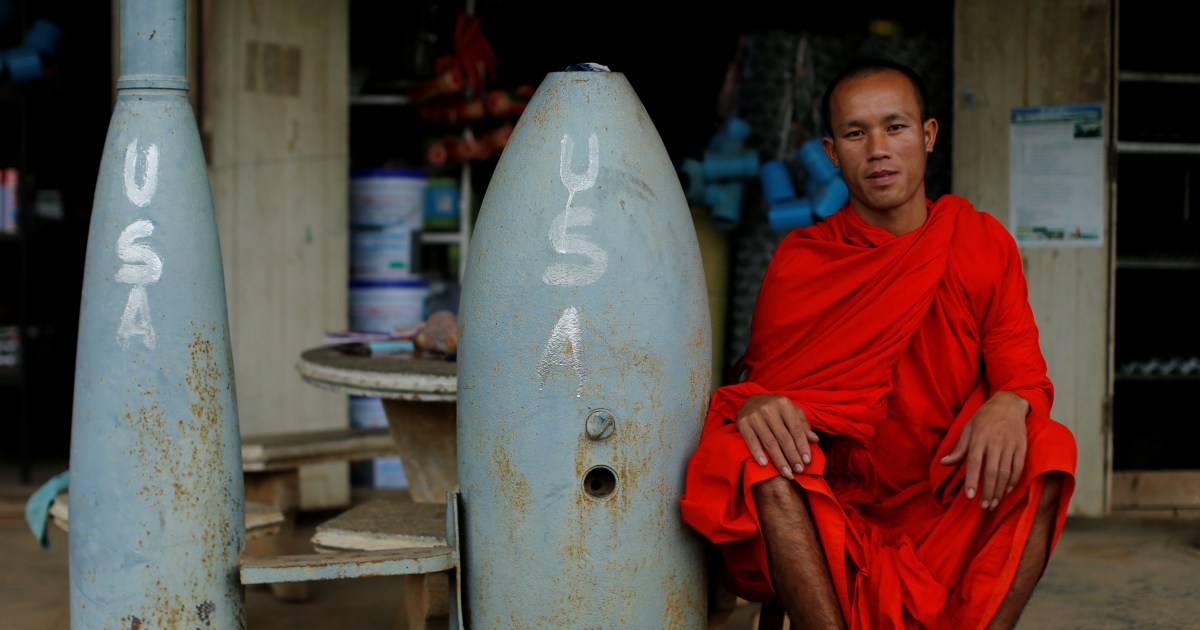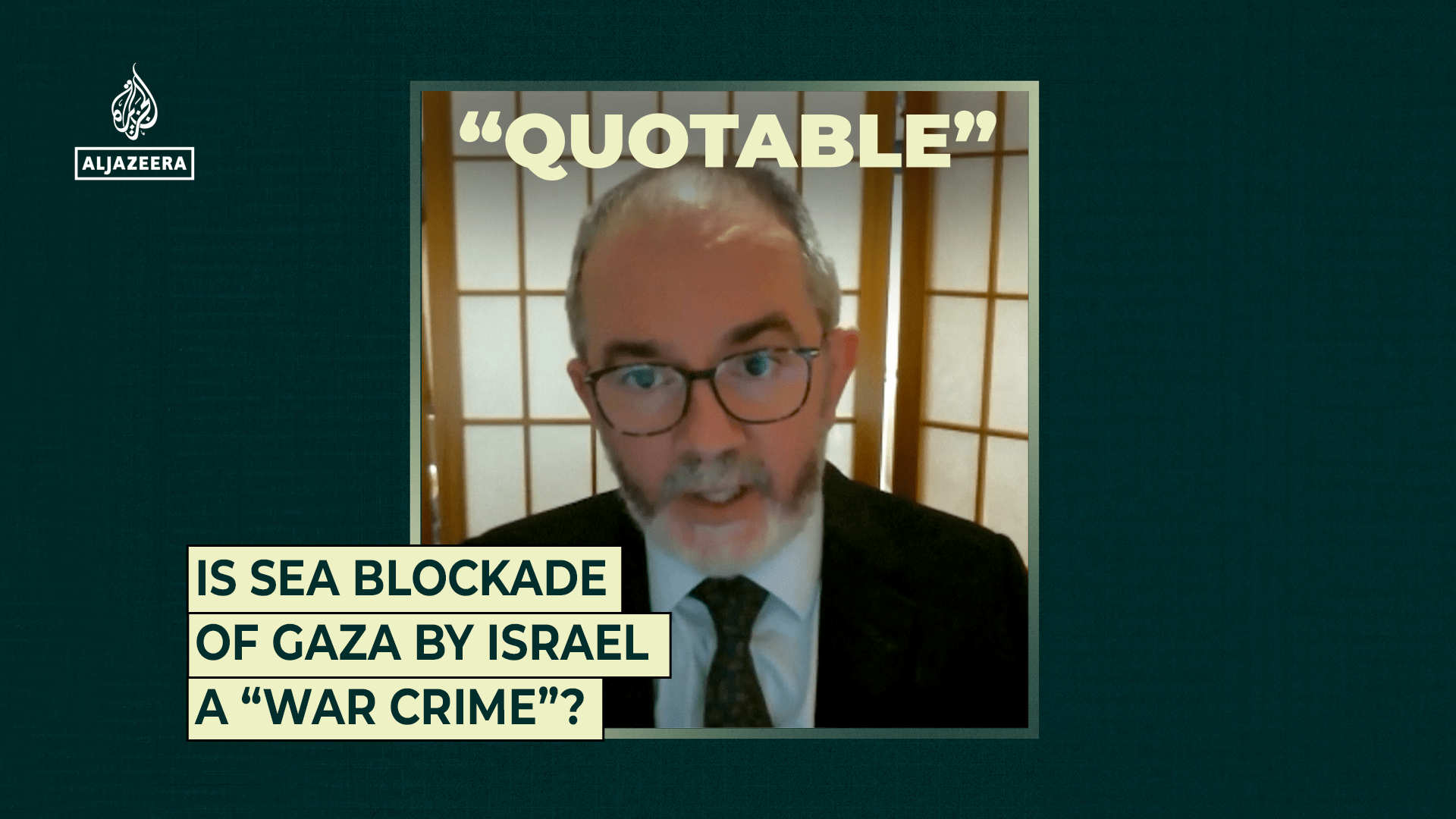
In August, the family of United States Air Force Sergeant David S Price finally buried his remains after more than 50 years of waiting.
The 26-year-old was stationed at a top-secret CIA base – Lima Site 85 – on a mountaintop in northeast Laos when it was overrun by Lao and Vietnamese communist forces in March 1968.
Price was among 13 US personnel, along with 42 Thai and ethnic Hmong soldiers, who were killed at the CIA radar station that was used to guide US bomber planes in their attacks on Laos and neighbouring Vietnam during the Vietnam War.
It took decades to find and identify Price’s remains largely because US warplanes were given orders to destroy the CIA site to cover up its work, part of a wider effort to obscure “The Secret War” Washington illegally waged in Laos – an officially neutral country – in the 1960s and 1970s.
This year marks the 60th anniversary of the commencement of a major strand in the US’s secret war, Operation Barrel Roll – a nine-year US bombing campaign that would see Laos becoming the most heavily bombed country per capita in history.

First visit to Laos by a US defence secretary
US Secretary of Defense Lloyd Austin is in the Laotian capital Vientiane this week, becoming Washington’s first-ever defence secretary to visit Laos.
Austin is attending the Association of Southeast Asian Nations (ASEAN) Defence Ministers’ Meeting-Plus on Thursday, as part of a regional tour which has already included stops in Australia, the Philippines and Fiji after Laos.
The defence secretary’s visit comes against a backdrop of intensifying geostrategic rivalry in the Asia Pacific region, with Southeast Asian defence chiefs looking for security assurances amid growing maritime disputes with China in the South China Sea and uncertainty in advance of January’s return of President-elect Donald Trump.
Not on Austin’s official agenda, however, is a remembrance of Operation Barrel Roll and the start of the darkest chapter in Laos’s modern history.

Operation Barrel Roll
Operation Barrel Roll formed a key component of the Secret War on Laos, so-called because successive US administrations conducted military operations in Laos, including arming 30,000 local anti-communist ethnic Hmong forces, while hiding America’s involvement in the war from Congress.
Only revealed to the US public in 1971, the military campaign in Laos was one of the most closely held secrets in the US’s long, disastrous and ultimately unsuccessful Cold War-era, anti-communist efforts in Southeast Asia in the 1960s and 70s.
As the conflict in neighbouring Vietnam spilled over into Laos, Operation Barrel Roll saw the US military fly 580,344 bombing missions – dropping 260 million bombs – between 1964 and 1973 as they targeted communist North Vietnamese supply routes inside Laos.
“It was extremely destructive, and it accomplished virtually nothing. They were bombing very heavily in ways that did not make sense strategically,” Bruce Lockhart, an associate professor of Southeast Asian history at the National University of Singapore, told Al Jazeera.
“The kind of war that was going on there, it just simply wasn’t effective to bomb. And so you caused a huge amount of damage and loss of life without really accomplishing anything,” Lockhart said.

Operation Barrel Roll saw the equivalent of one US bomb dropped every eight minutes, every day, 24 hours a day, for nine years.
The result was more bombs dropped on Laos – whose neutral status was protected under agreements signed at the Geneva Conferences in 1954 and 1962 – than in the entirety of World War II.
Lasting legacy of US bombing of Laos
Though more than half a century has passed since the last US bomb was dropped, the enduring legacy of that time is still felt today. With approximately 30 percent of the cluster bombs dropped by the US failing to detonate, tens of millions of unexploded ordnance (UXO) remain buried in Lao soil.
Since 1964, an estimated 50,000 people have been killed or injured by UXO in Laos, according to the Landmine and Cluster Munition Monitor, with about 20,000 of these casualties occurring since the war ended in 1975.

Children, lured by the toy-like appearance of cluster bombs, which are tennis-ball-sized fragmentation bomblets, dropped in the millions on Laos, make up approximately 75 percent of injuries.
Fourteen of Laos’s 18 provinces, and up to a quarter of the country’s villages, are “severely contaminated” with UXO, according to Norwegian People’s Aid, which carries out UXO and mine clearance work in the country.
Thanks, in part, to around $391m in US funding to clear UXO in Laos since 1995, the battle against the bombs is being won – albeit slowly.
The number of deaths from unexploded bombs fell from around 200 to 300 annually in the 1990s, to about 50 per year by the late 2010s. But by one estimate, at the current rate of bomb clearance operations, it will be 200 years before Laos is UXO-free.

Tom Vater, a Bangkok-based writer and co-author of the documentary The Most Secret Place On Earth – The CIA’s Covert War in Laos, told Al Jazeera that “UXO is the most obvious, visible legacy of the Secret War”.
But, he added, another legacy of the destructive US bombing campaign was the rise to power of the ruling Lao People’s Revolutionary Party, who ultimately defeated the US-backed royalist forces in the country’s civil war in 1975, governing the country with an iron fist ever since.
“The nature of the politics in Laos is so hermit-like, like North Korea and Cuba. There is a similarity there in that there’s just no accountability to the outside world. That’s another legacy of the Secret War,” Vater said.
“They won the civil war, and then they shut the country down, and then they ran with that,” he said.
“For the small communist elite that runs the country, that’s been a recipe for success, so they just keep it that way,” he added.







